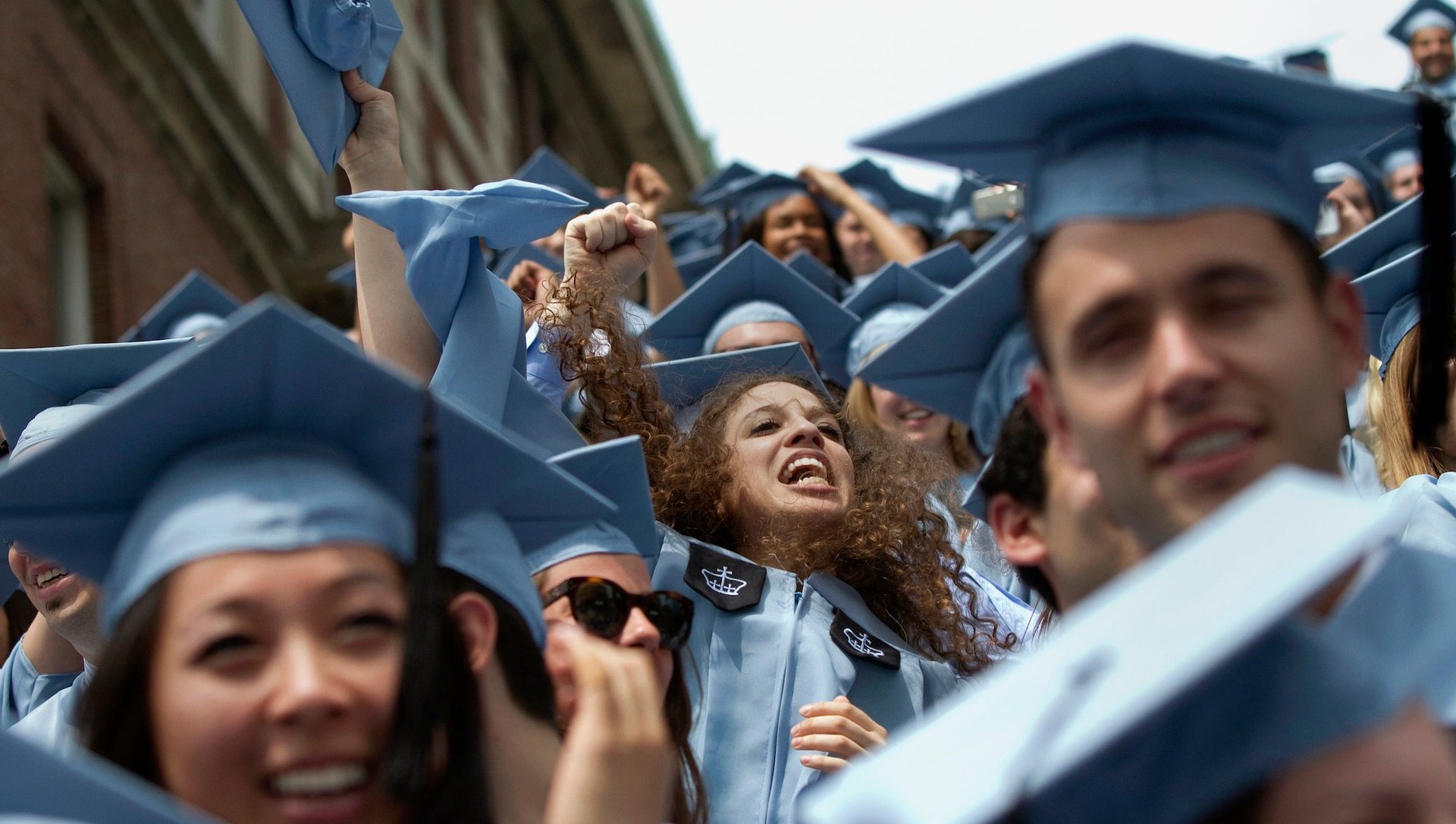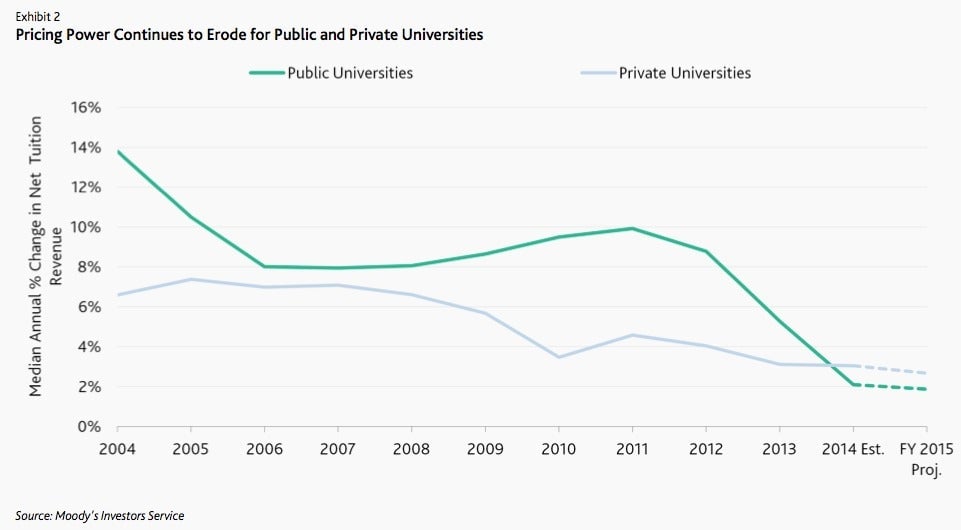People are getting smarter about college costs and it’s squeezing the whole industry
Today’s college students are more aware and informed about rising costs and financial aid, and more sensitive to price. That’s going to put ongoing pressure on the whole higher education industry’s finances, according to a Moody’s report (paywall) which gave a gloomy outlook for the whole sector.


Today’s college students are more aware and informed about rising costs and financial aid, and more sensitive to price. That’s going to put ongoing pressure on the whole higher education industry’s finances, according to a Moody’s report (paywall) which gave a gloomy outlook for the whole sector.
A severe version of this is putting major pressure on US law schools, which are actively competing on tuition (paywall) for students, slashing faculty, or closing altogether. Since the 1970s, US tuition costs for undergraduate and graduate degrees have climbed to historic highs. But tuition hikes have slowed substantially as the number of schools have grown, spurring more competition.
This year, a far greater number of the graduate and undergraduate schools Moody’s surveyed projected under 2% tuition growth, a fraction of what we’ve seen for years, and below the cost of inflation:

Tuition accounts for 75% of revenue for US private higher education institutions, and 47% for public ones. Other factors contributing to Moody’s negative outlook include weak state-level funding (many funding increases have come with tuition caps), a decline in government-sponsored research, and tough competition for university medical centers.
Meanwhile, smaller tuition increases haven’t kept in line with rising health care, salary, and debt service costs.
Universities have also been spending more on financial aid to attract students. This applies especially to lesser-known colleges and universities that draw a smaller pool of regional students in the country’s midwest and northeast. Elite schools have more national and international draw, but they have upped their financial aid to attract a more economically diverse set of students, which raises their profile.
American universities are also grappling with more applicants as online and common applications take hold, post-graduate employers become more selective, and students shop around for financial aid. The number of applications to the country’s undergraduate programs jumped by 70% from 2004 to 2013 with students often applying to ten schools or more. The deluge of applicants leads to lower yield (the number of applicants who actually enroll), difficulty in forecasting class sizes, and competitive tuition.
Another factor is the online tools that help students weigh the true cost of college. Tools like College Abacus and the individual calculators now required of schools (paywall) make it easier to forecast the likely cost, financial aid contribution, and debt burden of an education at any one school.